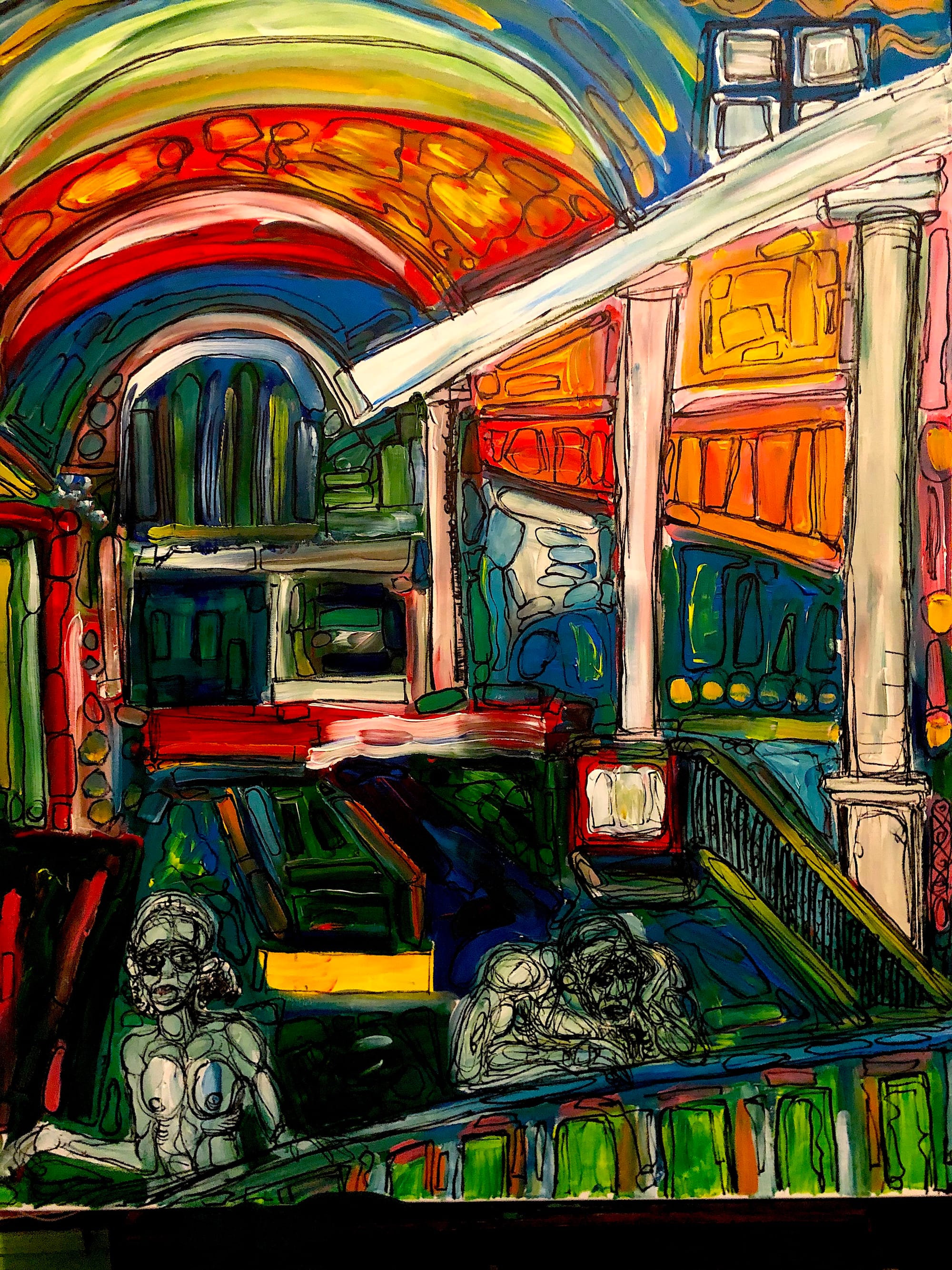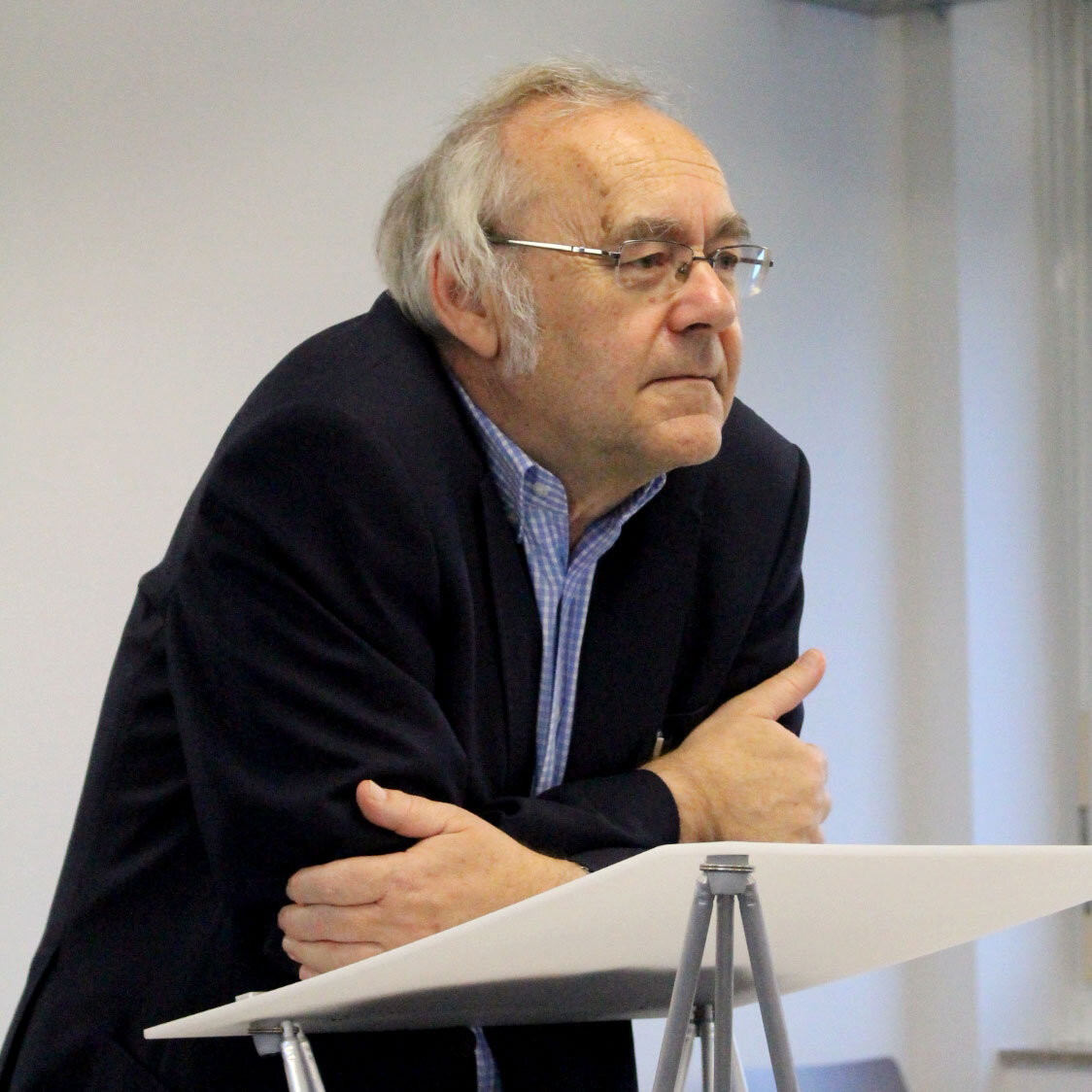The Beyond of Philosophy 8


Part II
51. The distinction between a ‘language-distinct’ world (and its objects) and a linguistic description of the world allows to claim for one’s own descriptions that they accord with the whole/general/actual world, and hence with the world of all participants in the discourse.Yet an exponent of the Dualizing Mode of Speech* can not grant this accordance for all those descriptions which contradict his own descriptions. Otherwise he would have to accept contradictions and suspend all those functions that the concept of truth had received only through the dichotomic distinction between language and world.To abstain from redeeming truth- and falsehood claims for descriptions is not possible without having to accept all kinds of contradictions.
52. It can only be determined, which of two or more descriptions in question is true, if the truth-conditions are fixed already before the start of the proceeding to examine the truth-claims. The object of the descriptions in question has to be presupposed as given in a way that it displays a differentiatedness ‘in the reality’ which is somehow matched by the description labelled as ‘true’ in the course of the examination or which is at least closer to it than the deviating description.
53. Now it is a thing of impossibility to denote/introduce the object of the descriptions-in-question without yielding an at least rudimentary description.
The request to describe the apple lying on the table is only possible when thereby the description “the apple lying on the table” is already being made. Also in the understanding of the Dualizing Mode there needs to be ‘alongside’ (‘above’) the object at least the description “object” or “this object is there”. Often other description-elements are added – especially space-time coordinates (in our example through the apple lying on the table .)
54. This necessarily alongside the object pregiven ( vorgegebene ) description must not be developed to the extent that it contains already one of the descriptions in question, as then the descriptions would no longer be in question. Their examination would have become superfluous through such an anticipation of the true description.
The truth, the adequacy, of that description which alone through the denotation of the object of the descriptions-in-question has been prescribed to them, must be presupposed – at least for the duration of the examination of the descriptions-in-question on the object (Prüfung ... am Objekt) . Otherwise the examination would be worthless or could not even be carried out at all.
55. In order to make a weighting of statements in the sense of the Dualizing Mode two things need to be given:
- the object (‘undescribed’, ‘as it is in reality’)
- and an, at least rudimentary, description. This rudimentary description must not be developed to the extent that as a consequence of its differentiatedness an assessment of the descriptions on the object (am Objekt) would become superfluous, because this assessment has already been made by the rudimentary description.
56. This creates the following difficulty for (the) Dualizing (Mode of) Speech: The ‘language-distinct’ object – that has also to be given apart from the rudimentary description and to which the descriptions-in-question are directed – must in no way be denoted. Each attempt of this kind would lead to another rudimentary description. Now the ‘language-distinct’ object is indispensable for the functioning of Dualizing Speech and an exponent only has the choice of either denying or admitting that the object is already there also in the form of a rudimentary description before the descriptions-in-question.
57. The concession that the object and a rudimentary description are preceding the descriptions-in-question, is the result of a distinction: a distinction between the object of the descriptions-in-question and that description which resulted from the mere denotation (Angabe) of the object. Such a distinction can only be drawn by a renewed denotation of the object. Connected with this renewed denotation is an additional rudimentary description, which again needs to be distinguished from the ‘real’, ‘undescribed’ object. But this description also relies again on a denotation of the object.
The attempt to distinguish the denoted (angegebene) object from the rudimentary description accompanying it, starts an infinite regress, which leads to a continuous string of rudimentary descriptions but not to the object ‘itself’*2.
58. The infinite regress is only effective as long as the concession remains that the denotation of the object is combined with making a rudimentary description: hence the regress is in practice a largely ineffective obstacle for starting Dualizing Speech.
59. To what extent this problem touches the foundations of the Dualizing Mode of Speech, shall now be demonstrated through the example of a thesis which is commonly recognized by its exponents. One formulation of this thesis is: “The relation between the sentences and what they are about can of course again only be expressed through sentences.” Another reads: “The relation between the descriptions of the world and the world being described can only be expressed again through descriptions.”
The thesis clearly expresses the dichotomic distinction between language and world, description and object, between the sentences and what they talk about.
The one, first, side of the dichotomy is of a lingual ‘nature’ (for example language, descriptions, statements, sentences) and the other, the second side, is (allegedly) of a non-lingual nature (for example world, reality, objects, that-what -is-talked- about ).
60. In the centre of this discussion are not the consequences of the dichotomy, but the problems connected with its construction: The making of the distinction between language and world is the precondition in order to find out the relations between language and world.
61. Setting up the dichotomy ‘succeeds’ if it is ignored or denied that the denotation of the object – thus the second side of the dichotomy – comes together with a rudimentary description. What is disregarded here is that already for denoting the second side one has to make recourse to the first side.
62. Without the first side – more precisely: without an element of the first side – the second side cannot be denoted. On the other hand the second side must be there prior to the first side: descriptions are always descriptions of something.
Dualizing Speech wants to comply with this request by presupposing/positing the allegedly ‘language-distinct’ object ahead and opposite the descriptions of the object. Such a ‘solution’ shall guarantee the dichotomy between the ‘language-distinct’ object of the description and the lingual description of the object.
Albeit this solution only covers up the problem discussed here. The dichotomy must ‘exist’ already a step ahead, that is before a discussion about the relation between the ‘language-distinct’ object and the lingual description can start – namely as the dichotomy between the denotation ( Angabe ) of the object and the object being denoted ( das angegeben wird ).
63. The concession, that the denotation of the object comes with a rudimentary description, is not a sufficient reason for Dualizing Speech to renounce the ‘language-distinct’ character of the object.
The claim for a ‘language-distinct’ object of descriptions is continuously upheld on the ground that the object of the descriptions-in-question is the apple lying on the table and not the rudimentary description “The apple lies on the table.” The rudimentary description “The apple lies on the table.” should, on the contrary, be a description of the object accompanying the denotation of the object, namely the apple lying on the table.
This proceeding is a renewed presupposition of the dichotomy. The coming about of the dichotomy is not discussed and insofar the rudimentary description, which is renewed through the denotation of the object, is ignored. Moreover a priority of the object with respect to the (rudimentary) description “The apple is lying on the table.” is established. Thereby this description gets the same status as the other descriptions of the object and becomes principally accessible to doubt.Insofar now the adequacy of the rudimentary description is in question, it is also in question, if an apple is lying on the table. As long as is (therefore) in question which object is being described, the descriptions-in-question of the apple lying on the table cannot be carried out.
In order to describe the apple lying on the table, the adequacy of the rudimentary description “The apple lies on the table.” must not be questioned. Of course the rudimentary description “The apple is lying on the table.” can be put into question. But if this happens another object has to be denoted by way of another rudimentary description, for example the piece of fruit that is lying on the table.
If the object of a rudimentary description is denoted, the rudimentary description starts to be in question and is therefore no longer a rudimentary description – in favour of another rudimentary description. Thus a change of the description-discourse ( Beschreibungsdiskurs ) is initiated: For example from a description-discourse, the object of which is the apple lying on the table, to a description-discourse, the object of which is the piece of fruit lying on the table.
*In the original German I distinguish between Dualisierende Redeweise and Nicht-dualisierende Redeweise . In English Redeweise translates into “Mode of Speech” or “Way of Speaking” – three words instead of one. Occasionally this works, but when a short paragraph requires multiple use of Redeweise , then style, intelligibility and even grammar are causing headaches. I mainly settle for “Dualizing Speech” vs. “Non-dualizing Speech”, which is sometimes semi-satisfactory. In addition to “Dualizing Speech” / “Non-dualizing Speech” I shall use in Part II “Dualizing Mode of Speech” and “Non-dualizing Mode of Speech” as well as “Dualizing Mode” and “Non-dualizing Mode”.
*2 This infinite regress must not be mixed up with the infinite regress which develops when the adequacy or inadequacy of descriptions should be justified. Such a regress of justification ( Begründungsregress ) can only develop when the regress discussed here is ignored or disrupted or if it is denied from the outset that the denotation of the object is only possible in connection with a rudimentary description.Not only the termination of justifying knowledge often happens through a dogma, the start of the process also happens through a dogma. (Nicht nur der Abbruch der Erkenntnisbegründung erfolgt häufig durch ein Dogma, auch der Aufbruch erfolgt durch ein Dogma.)

Josef Mitterer is an Austrian philosopher.
Next: The beyond of Philosophy 9
The Beyond of Philosophy 1 here
The Beyond of Philosophy 2 here
The Beyond of Philosophy 3 here
The Beyond of Philosophy 4 here
The Beyond of Philosophy 5 here
The Beyond of Philosophy 6 here
The Beyond of Philosophy 7 here